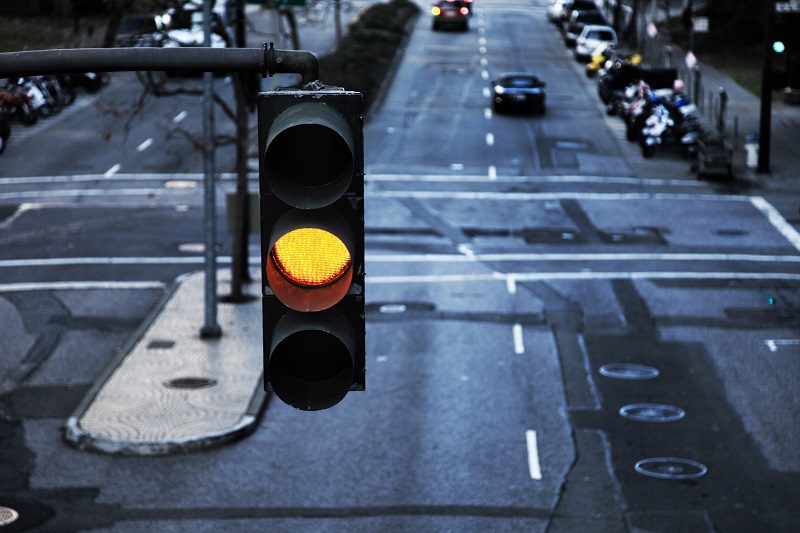Who’s at fault in caution light crashes?

Canada’s dreaded amber light: it’s the source of numerous intersection crashes, resulting in untold insurance claims.
If you are dispensing driver safety tips to clients, be sure to tell your insureds to watch out when turning left against yellow caution lights at intersections. Left-turning drivers will more commonly be found at fault for collisions with drivers blazing through an amber.
“Although the outcome of a given case will of course be determined based upon facts that are unique to that case, a driver making a left-hand turn will generally not be able to rely on an assumption that the other driver will stop for the yellow light,” Charles E. Gluckstein and Bethany Nicholson of Gluckstein Personal Injury Lawyers observed in a blog article for Mondaq.
”Fault for the resulting collision will likely be found in such cases on the part of the left-turning driver.”
Drivers have a legal duty under s. 144(15) of the Highway Traffic Act to stop for a yellow light, but only if they can do so safely, Gluckstein and Nicholson noted. Otherwise, they are allowed to proceed into the intersection with caution.
Under ss. 142(1) and 141(5) of the Act, a left-turning driver must ensure the turn can be safely made. Generally, it is the responsibility of the driver making the left-hand turn to ensure it’s safe to proceed through the intersection.
“Some drivers attempting to make a left-hand turn on a yellow light may assume that an approaching vehicle will stop,” the lawyers write. “However, this assumption does not lessen or negate liability for left-hand turning drivers in the event of a collision.”
The lawyers point to the 2008 Ontario Court of Justice decision in R. v Hamid, in which the court found the driver of a left-hand turning vehicle could not rely on his assumption the approaching vehicle (a motorcyclist in this case) would stop for the yellow light.
As it turned out, the court found that even though the motorcyclist — who was killed in the collision —may have been speeding, he still had the legal right to pass through the intersection because he may have judged he could not stop safely on the amber light.
The left-turning driver was found at fault for a variety of reasons, one being that his line of sight was obscured when he started to make the turn. Also, the court found, he had enough time to see the motorcyclist and stop before making the turn.
Feature image courtesy of iStock.com/MAYBAYBUTTER







